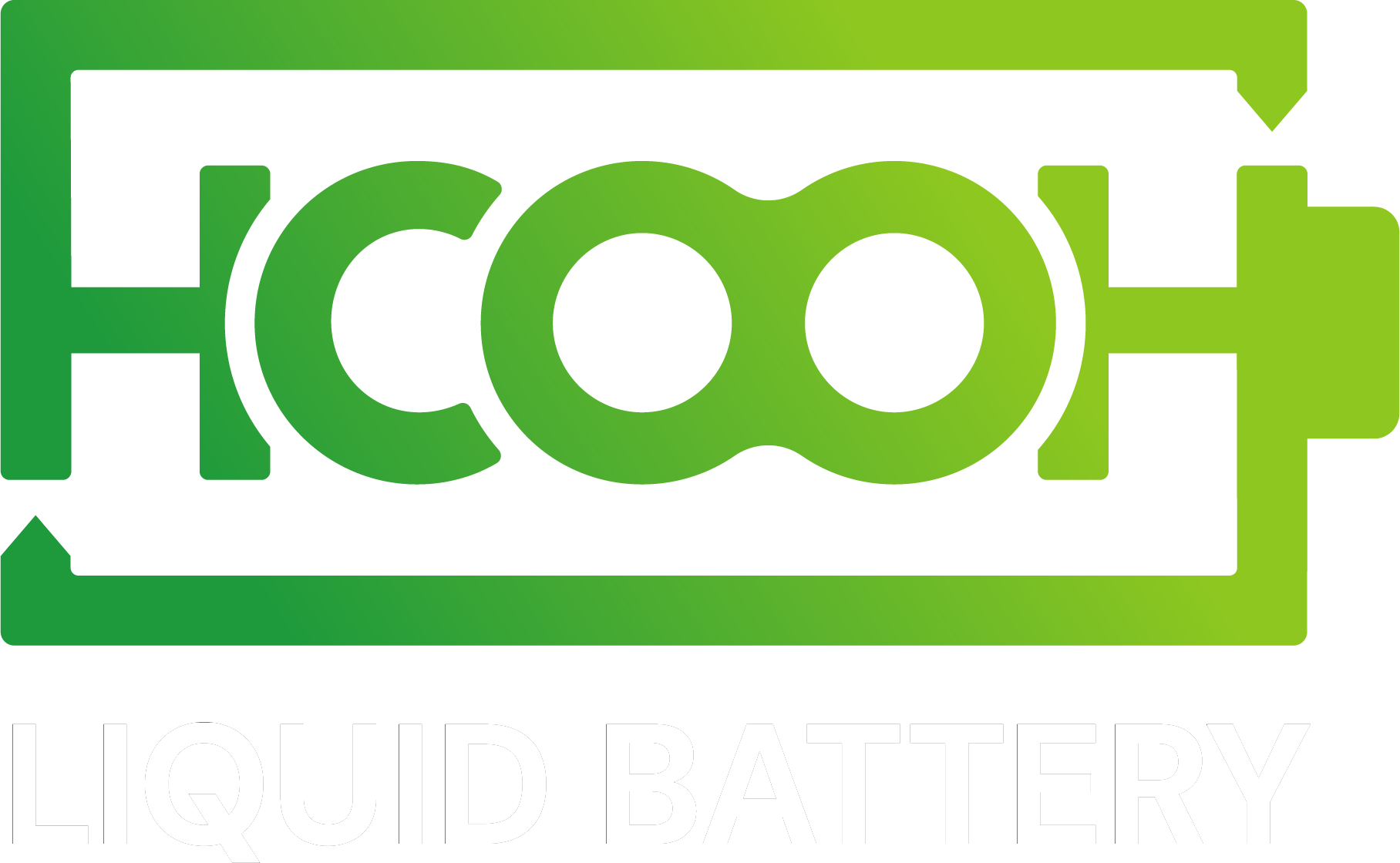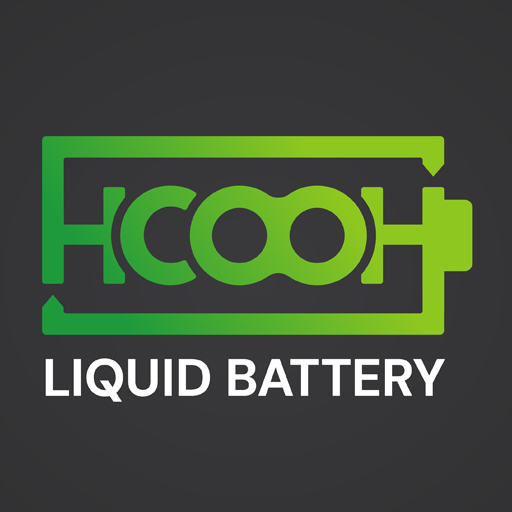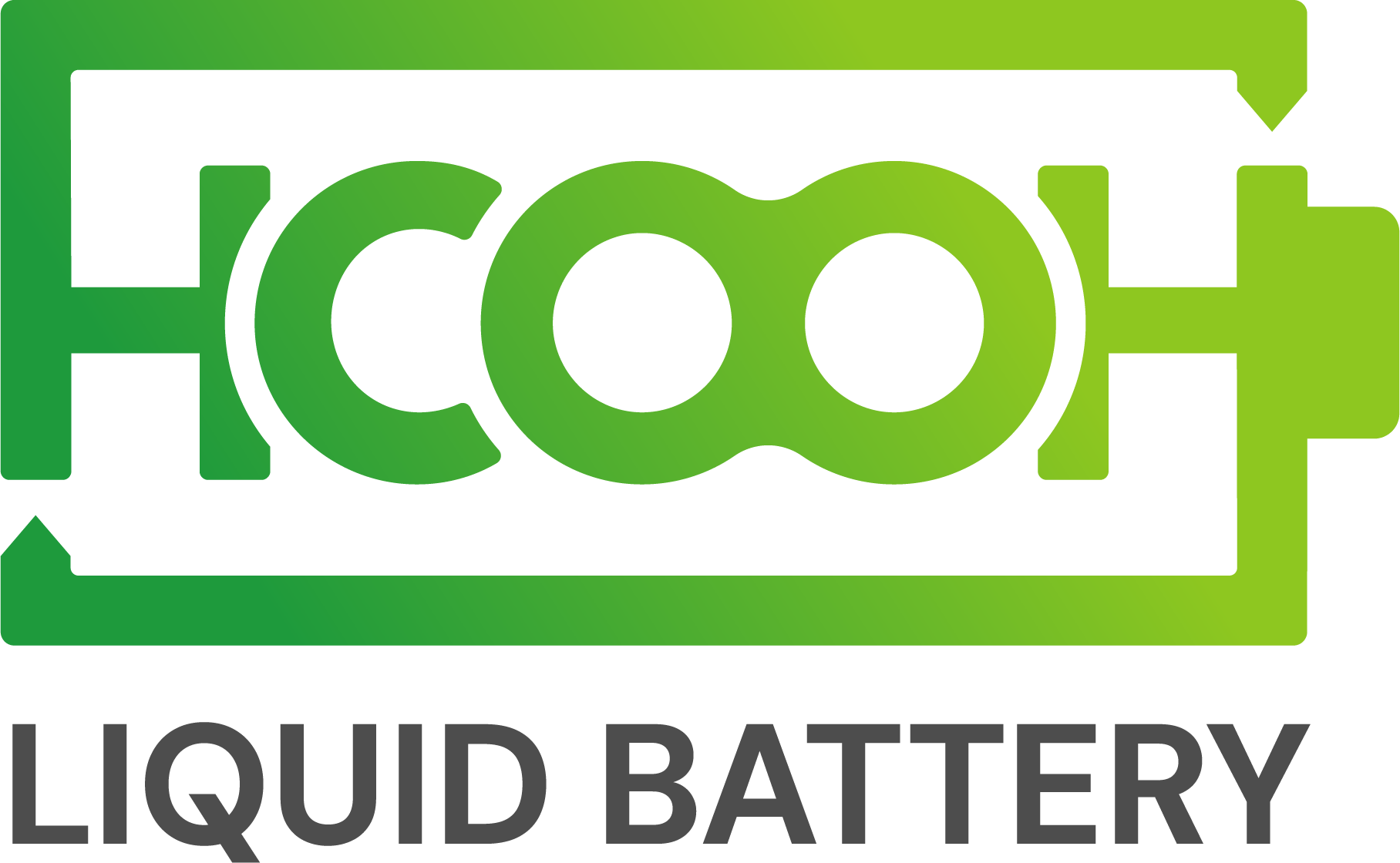Formic Acid: The True Green Energy Storage Solution
Why formic acid? Why is formic acid the winning solution? What makes this RK-X technology so promising? IOI Investment Zrt. has developed a disruptive innovation that converts carbon dioxide into formic acid through a water-based photocatalytic process. This technology forms the basis of an energy storage device that can globally enable the transformation of the energy industry, significantly responsible for global warming, into a near-zero carbon emission electricity system. Climate goals are no longer just plans; they can be realistically achieved with solvable tasks.
“The RK-X is not only an environmentally friendly solution but also economical, as formic acid produced from carbon dioxide serves as an energy carrier and thus as fuel. Formic acid stores hydrogen in chemical bonds, which can be easily released at the point of use.”
Formic acid is a weak acid liquid, making it easily transportable from the production site to the usage site. 1 kg of formic acid can store 33 kWh of energy, which can be locally extracted with simple, well-controlled technologies.
Green energy storage is realized in two steps. First, the energy is “stocked” by producing a new energy carrier, formic acid. The production of formic acid from carbon dioxide and water, using the RRR catalyst, occurs in an endothermic process with energy investment, “stocking” energy. Formic acid (CH2O2 or HCOOH) is a common, harmless natural liquid found in the environment, making it easily transportable and refuelable. Formic acid can be easily transported from the production site to the energy release site if the energy “stocking” and usage do not occur at the same location. The hydrogen stored in formic acid, produced from carbon dioxide via photocatalytic means, can be easily released at the point of use. The hydrogen “unstocking” from the energy carrier is realized in the second step in an endothermic process with the RRX catalyst at room temperature, heated with waste heat.
How It Works and Why This Photocatalytic Process is Cheaper
During electrolysis, two bonds need to be broken, while in the RK-X process, only one covalent bond needs to be broken. Overall, 33 MWh of energy is needed for 1 ton of H2, or 33 kWh of energy is required to produce 1 kg of hydrogen. Thus, there is a 40% advantage compared to electrolysis technologies. In comparison, electrolysis requires 515 MWh for 1 ton of hydrogen or 515 kWh for 1 kg of hydrogen. The market progression of the process aims to convert approximately 1 million tons of carbon dioxide into roughly 1 million tons of formic acid in the first phase.
Currently, the world’s annual formic acid production is 800,000 tons. With the indicated theoretical amount and green electricity-energized process, the energy storage capacity necessary to invigorate electromobility can be established, creating a carbon-neutral operational model for the relevant transport vehicles, driving millions of electric cars, e-buses, e-aircraft, and thousands of electric propulsion but formic acid-fueled ships.

“The RK-X is not only an environmentally friendly solution but also economical, as formic acid produced from carbon dioxide serves as an energy carrier and thus as fuel. Formic acid stores hydrogen in chemical bonds, which can be easily released at the point of use.”
The RK-X process allows a high CO2 emission plant to be economically transformed into a formic acid production plant, using the produced CO2 as a raw material in a new value chain and a disruptive energy storage technology system, in line with circular economy principles. For instance, a current power plant that significantly emits concentrated carbon dioxide can fully utilize CO2 for formic acid production, reducing atmospheric pollution locally and integrating carbon dioxide into an energy storage system as a technological raw material.
Formic acid production plants installed next to coal-fired power plants are ideal locations, as carbon dioxide, water, and energy are all available together. Similarly, RK-X technology-based catalysts can be synergistically used alongside renewable power plants to store excess green energy.
Energy Storage Plants Where Needed
One of the main challenges of the 21st-century electricity system is integrating large-scale energy storage systems with high performance and capacity into the system. One forward-looking solution for regulation could be the establishment of energy storage plants by converting existing coal-based power plants into energy storage plants. These can rapidly and on a large scale store and release energy, solving the system management problems caused by the massive deployment of renewable, weather-dependent power plants.
RK-X system energy storage units are modular, scalable, essentially without hazardous phases during operation, enabling high-efficiency, high-energy density, and extremely low-cost energy storage, making them suitable for providing regulatory functions in the 21st-century electricity system. This could allow the electricity system to operate with 100% renewable sources. The planned energy storage can be practically of any capacity, with over 90% efficiency for storing and releasing the energy, which does not decrease over time.







